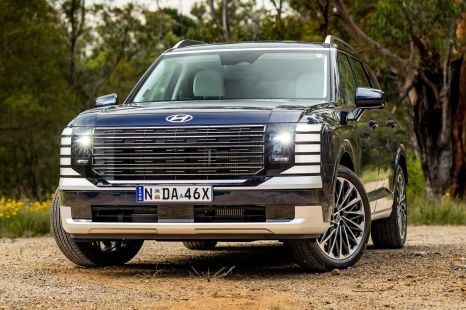

Matt Campbell
2026 Hyundai Palisade Calligraphy Hybrid AWD review
5 Hours Ago
Guest User
My dashboardApple’s next generation of CarPlay could be the ultimate infotainment system for your car. So what’s new?

Contributor
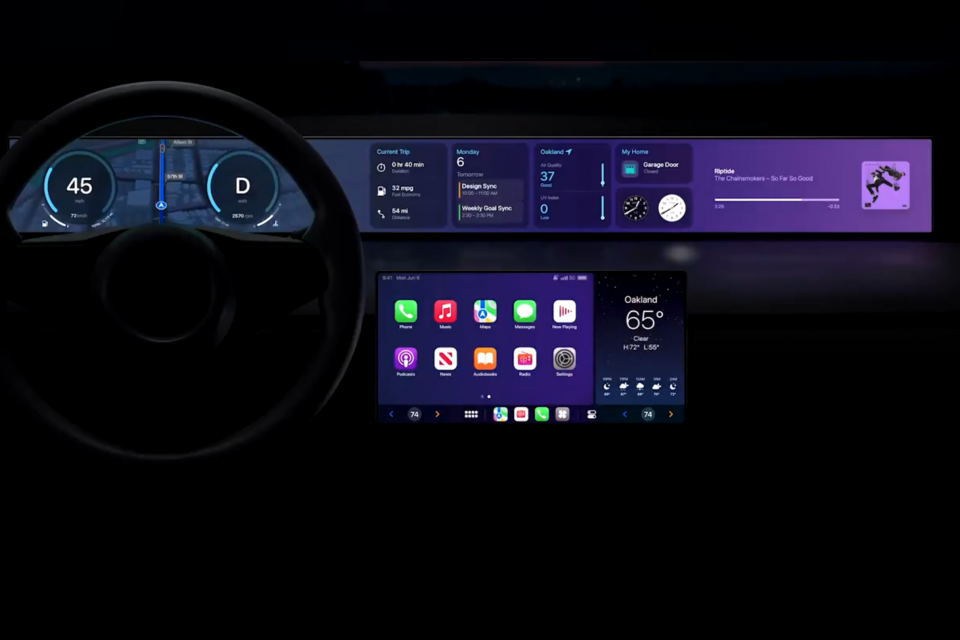

Contributor
Apple CarPlay has arguably been one of the most significant developments in infotainment systems and in-car technology in recent memory.
Running from a connected iPhone, the CarPlay user interface has provided easy, intuitive access to maps, music, messages and more at a level significantly beyond a standard Bluetooth or wired USB connection.
While Apple has gradually improved CarPlay with each release of the iPhone operating system (known as iOS), the reveal of iOS 16 at Apple’s recent WWDC (Worldwide Developers Conference) marks the most significant overhaul to date.

With iOS 16, Apple has recognised that many modern cars have multiple digital screens, with many featuring a digital instrument cluster and central infotainment screen and some also featuring a passenger-side display and/or a separate display for climate controls.
Correspondingly, CarPlay will offer multi-screen support, with Apple claiming the software will be able to extend and automatically optimise itself for all the screens on the dashboard, regardless of their size, orientation or positioning.
In conjunction with this, Apple is also expanding CarPlay’s functionality, and the driver and passengers will be able to use CarPlay to change the temperature or other air-conditioning settings, as well as manipulating the radio, amongst other functions.
Let’s take a closer look at what’s coming.
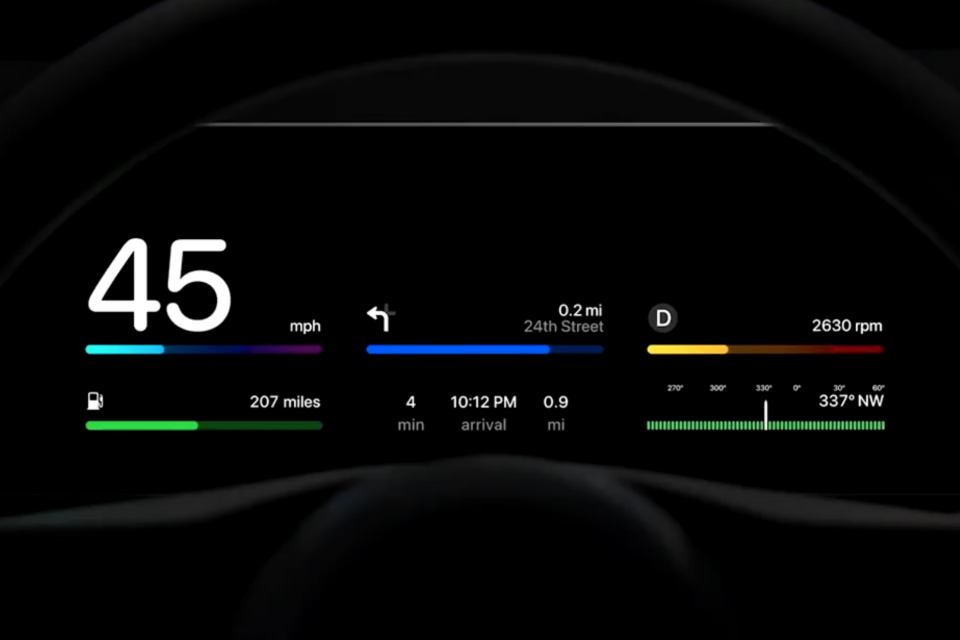
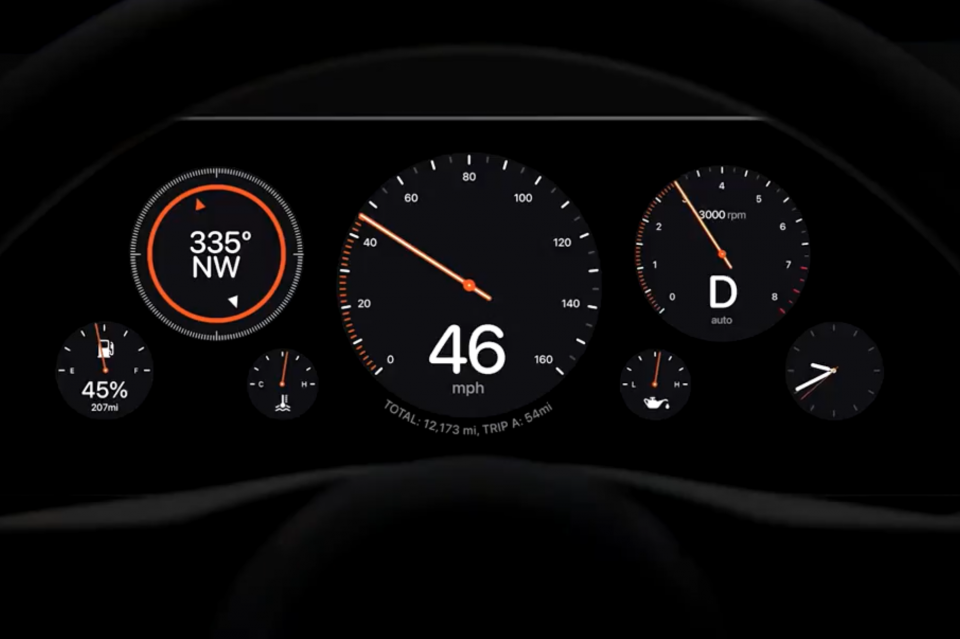
The user interfaces for the next generation of Apple CarPlay have been substantially revamped, and these changes take full advantage of CarPlay’s forthcoming ability to work across every screen in your car.
For a company widely perceived to strictly limit the customisability of its software, one of the key developments in this new version of CarPlay is a clear yet highly personalised digital instrument cluster. Currently, CarPlay can at best display navigation directions in the car’s native UI for the digital instrument cluster.
In its next generation, CarPlay will take over the digital instrument cluster entirely. Drivers will be able to choose from a wide variety of themes, and will additionally be able to customise aspects of each one.
This includes everything from a simple bar chart-style display, showing speed and other key statistics such as fuel level and coolant temperature, to a contemporary take on the classic circular dials, that can display the same range of information but be personalised with a variety of different colour gradients, backgrounds and shadings.

Of course, Apple will also offer views with a full map display. With these themes, the map can either take focus between two circular dials, or the driver can opt for a full 3D map display, with speed and other information being relegated to a secondary focus.
Apple’s approach to personalisation and customisability with these instrument cluster options appears to echo the path that it has taken with watch faces on the Apple Watch. It’s unlikely that Apple will allow third-party developers or car manufacturers to create their own ‘instrument cluster themes.’
Instead, Apple will create a wide variety of curated options, each of which has significant scope to be personalised, but all of which have a shared ‘Apple’ design feel to them.

The next generation of Apple CarPlay will also introduce a far more developed version of widgets. Much like widgets on the iPhone, these are smaller ‘views’ of an app that can sit on a particular infotainment display, and provide glanceable information such as upcoming calendar appointments, the weather or a trip meter.
It appears the next generation of Apple CarPlay will support widgets from a variety of apps, including the Clock, Weather, Calendar and Home apps, among others. Like iOS on the iPhone, there is also the strong possibility that third-party developers making apps that support CarPlay will also be able to develop corresponding widgets.
Commensurate with these developments are app-specific UI improvements. The Podcasts app, for example, will be much more fleshed out, allowing users to find the latest episodes and more easily look up episodes that have been previously saved.
A weather app will also be introduced for the first time, which appears to largely mimic the functionality of the native iPhone weather app, and will display air quality, temperature and other information.
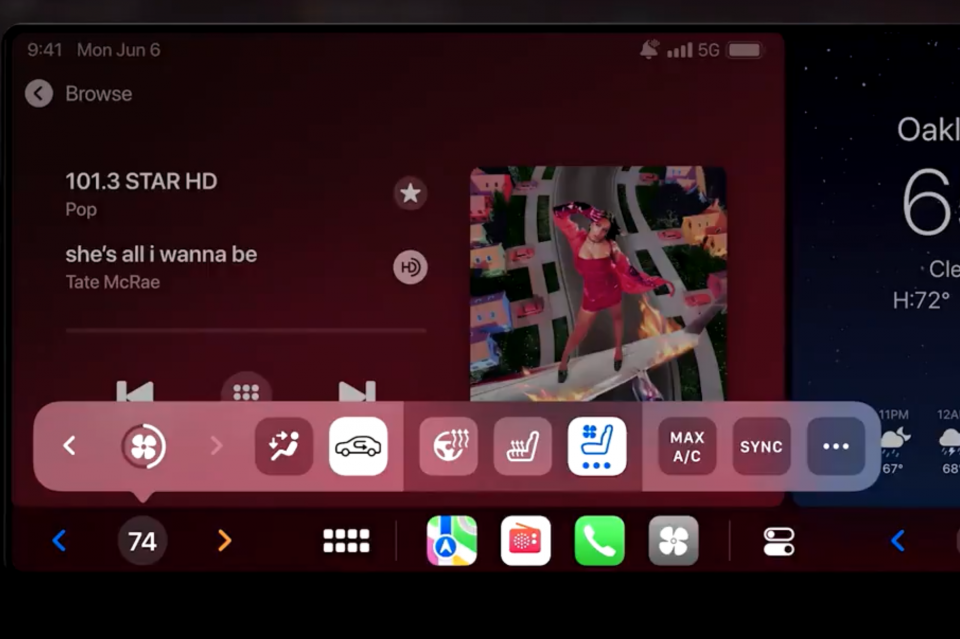
The most significant functionality improvements are borne from Apple’s claim that the next-generation CarPlay will have deeper, real-time integration with the car’s hardware.
Practically, this means drivers and passengers will be able to control their car’s heating ventilation and air-conditioning (HVAC) and other functions such as heated seats within CarPlay. Users will also be able to manipulate other media functions such as the radio, while CarPlay will read data from the car such as speed, fuel consumption and fuel levels, and power and torque outputs.
All of this combines to allow CarPlay to remain the default infotainment interface for your car, and largely removes the need to resort to the vehicle’s native infotainment system to control these functions.

Apple CarPlay will also benefit from apps with improved functionality, as announced in the broader iOS 16 update. Apple Maps, for example, will support multi-stop routing, to allow users to enter in up to 15 destinations. Siri can also now send messages without these needing to first be confirmed by the driver.
Third-party app support is also improved. Previously, Apple only allowed limited categories of apps to have a presence in CarPlay. This is now broadened with two new app categories. The first of these are fuelling apps, such as those that enable you to find the closest petrol station or the cheapest fuel in a particular area. This could mean that apps such as the NSW Government’s FuelCheck app could now be directly available in CarPlay.
The second category is apps for various ‘driving tasks.’ This category of apps is more ambiguous, but presumably could include apps that provide roadwork or other hazard information, or apps that provide toll rates or calculate toll amounts for a particular road.
Note that the app-specific functionality improvements described above are not restricted to the next generation of CarPlay, but instead will be coming to CarPlay as part of the public release of iOS 16 later this year.
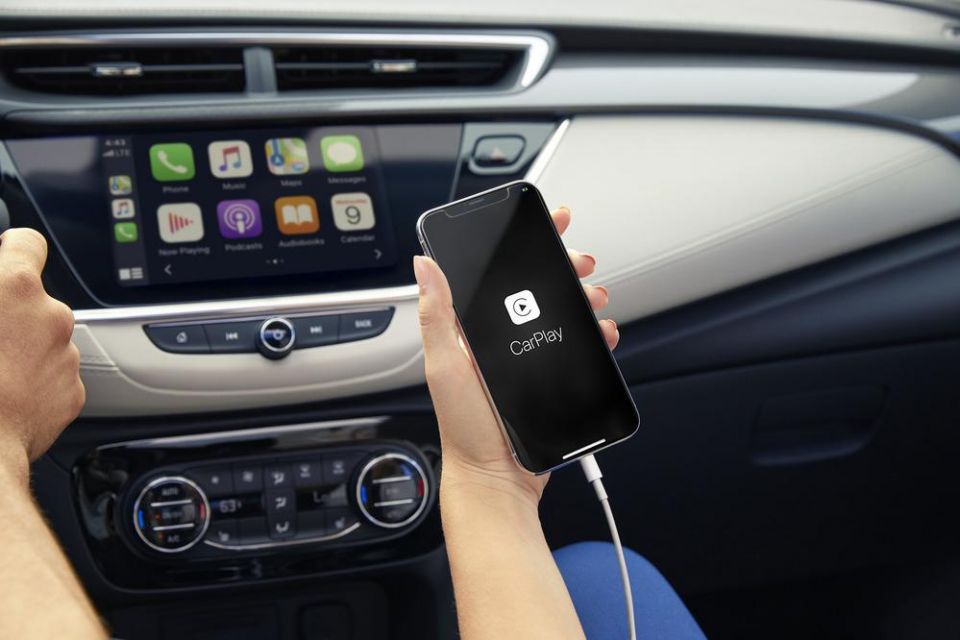
Yes. Unlike Android Automotive, which is an in-built Android-based infotainment system for cars (and therefore doesn’t need a connected Android smartphone to work), Apple has described the next generation of Apple CarPlay as ‘the ultimate iPhone experience for the car.’
Additionally, Apple has said that the processing of information read by CarPlay will be done on-device through a connected iPhone, in a secure and private manner. These statements all suggest that CarPlay will remain an iPhone-centric experience in the foreseeable future.
MORE: Android Auto vs Android Automotive: What’s the difference?
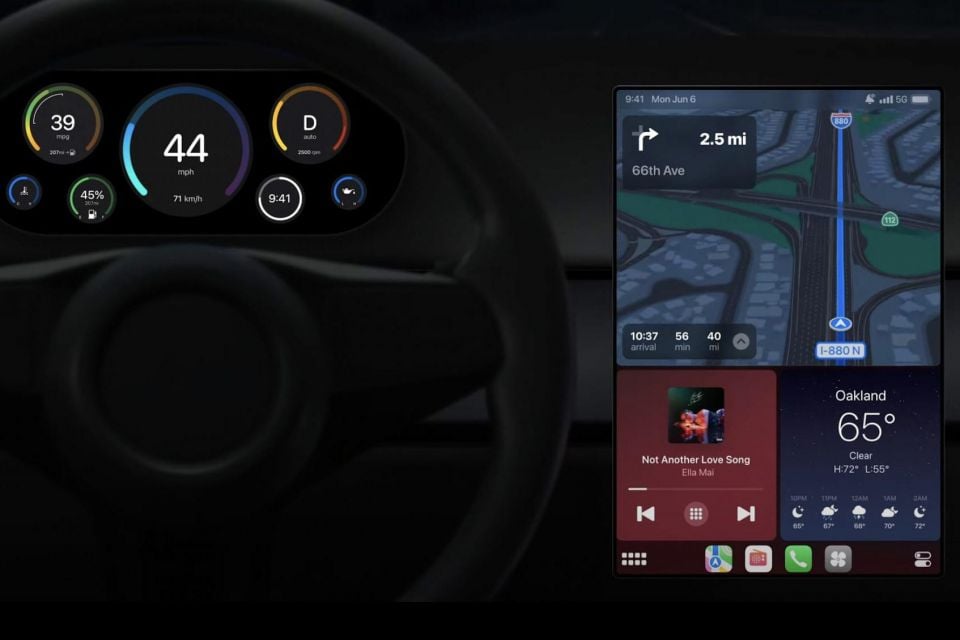
Apple has mentioned the first vehicles to feature the next generation of CarPlay will launch towards the end of 2023. In reality, there is often a significant delay between a vehicle launching, or being announced, and going on sale in Australia, so it seems more likely the first vehicles with the next-generation CarPlay will arrive here in 2024.
It’s equally important to note that, like clockwork, Apple launches a new release of iOS every year, with the software being announced at WWDC in June, before typically being made available for the public the following September or October.
This means that in reality, iOS 17 and potentially even iOS 18 will be announced before the next generation of CarPlay is widely available. Each of these future versions of iOS are likely to feature further refinements or added features to the next-generation CarPlay experience.
Apple has announced the next generation of CarPlay will be supported by models from a range of manufacturers, including Jaguar Land Rover, Mercedes, Porsche, Ford, Renault, Volvo, Honda and Nissan among others.


Matt Campbell
5 Hours Ago
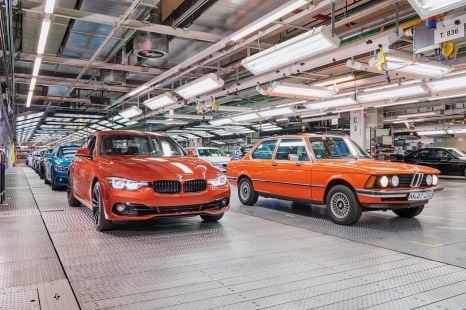

Ben Zachariah
13 Hours Ago
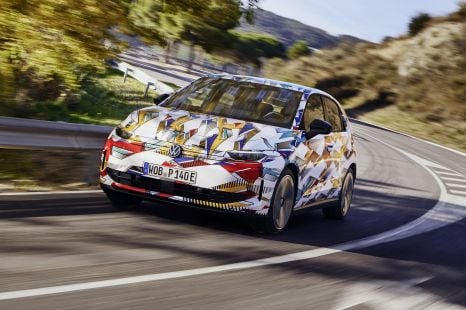

William Stopford
14 Hours Ago


William Stopford
15 Hours Ago
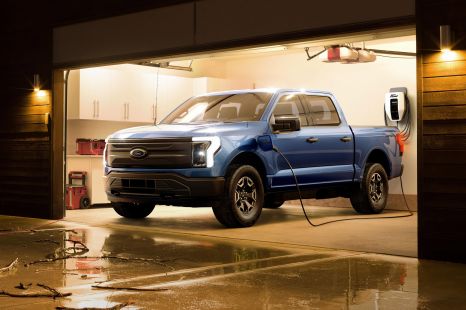

Damion Smy
17 Hours Ago


Elle Baillieu
18 Hours Ago